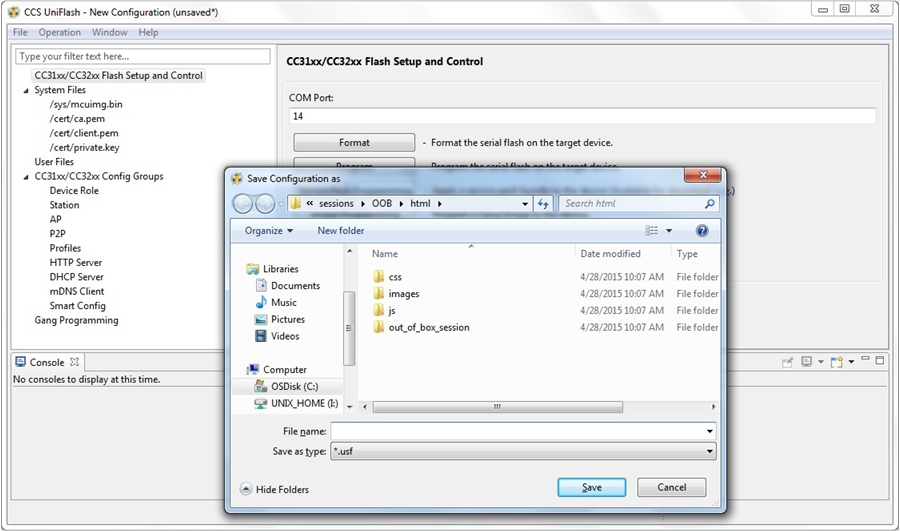SWRU558 June 2020 CC3100 , CC3100MOD , CC3200 , CC3200MOD
-
SimpleLink Wi-Fi CC3100, CC3200 UniFlash
- Trademarks
- 1 Introduction
- 2 Installation
- 3 Prerequisites
- 4 Uniflash Block Diagram
- 5 Session Support
- 6 Secured File System Support
- 7 GUI Interface
- 8 CC3200 Support
- 9 Command Line Support
- 10 Configuration File Support
- 11 Image Creation and Programming
- 12 Troubleshoot/Debugging
- 13 Limitations
- 14 References
- A UART Connection
5.4 Saving a Session
Users can save their configuration by choosing the location and name of the configuration file (.usf will be added automatically if not provided). Once a configuration is created and saved, any further changes in the GUI will be automatically saved to this configuration (users do not need to choose to save again, unless then want to save to a different configuration). A directory with the template and token xml files is created at the location where the user chose to save the configuration file.
Note that if users do not save their configuration before closing UniFlash, the changes will be lost (although the actual files are still there in the temporary location).
 Figure 3. Saving a Session
Figure 3. Saving a Session